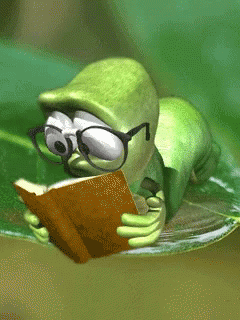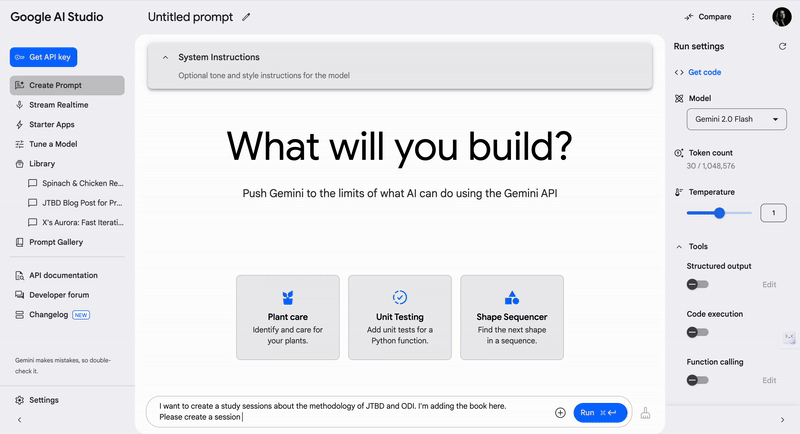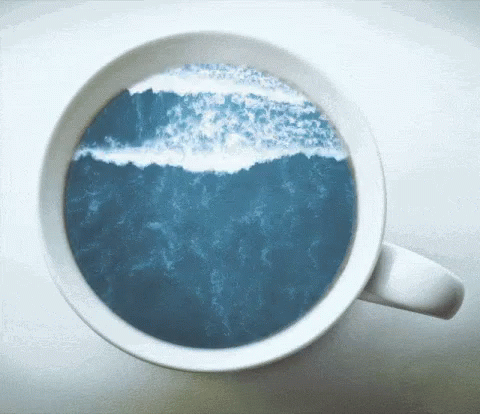Coffee With Tanya - Vol.24
Talking about: 2025 Graphic Design Trends, The Language of Color, Reading Brains, Google AI Studio, Tokyo's Hidden Tranquility, February in History.

Hello, coffee lovers! Yes, we agreed that tea lovers are more than welcome 🍵
Here's what we have on our menu for today:
- Design - Five graphic trends to watch in 2025 🎨
- Psychology - The language of color 🌈
- Science - Reading rewires your brain 📚
- AI - Google AI Studio: Free tool for everyday magic 🧙♀️
- Travel - Tokyo's hidden tranquility 🏯
- Word bites - Mokita 🔡
The greatest use of a life is to spend it on something that will outlast it // William James - American philosopher and psychologist, first educator to offer a psychology course in the United States.
Five Graphic Trends Reshaping 2025 🎨
Fellow design enthusiasts, get ready to check what's shaping to be a visually spectacular 2025.
If you've been feeling like design has been playing it safe lately, this year is about to shake things up. According to It's Nice That, we're seeing a beautiful rebellion against the generic and expected.
Here's what's hot right now 🔥
- Chaotic Maximalism is back! Remember the wild 90s aesthetics? They're returning with full force. Think clashing colors, mismatched fonts, and delightfully messy compositions. It's a bold rejection of the clean, minimal look we've been drowning in.
- Typography is getting physical - Letters aren't just flat elements on a screen anymore. Designers are exploring 3D forms, textures, and sculptural qualities, creating type that demands to be touched.
- Cultural storytelling through design - Brands are digging deeper into authentic cultural narratives. It's less about surface-level aesthetics and more about meaningful connections to heritage and community.
- Sustainable design systems - It's not just about looking good; it's about doing good. Designers are developing systems that are beautiful, functional, AND environmentally responsible.
What I find most exciting is that all these trends celebrate human imperfection and uniqueness. In a world of increasingly polished digital experiences, something is refreshing about a design that feels handmade, personal, and a little bit messy.
Check out the full article here and let me know which trend resonates with you.

The Language of Color Shapes How We See the World 🌈
Have you ever wondered why some languages have just a few words for colors while others have dozens?
Or why your friend insists that jacket is "definitely teal, not blue"?
I stumbled across a fascinating article in Psychology Today about how language shapes our perception of color, and it's blowing my mind! 🤯
Here's the deal: the way we talk about colors actually changes how we see them.
Seriously!
Take the Himba people of Namibia, who have fewer words for colors than English speakers. They can distinguish shades of green that look identical to us, but struggle with blues that we find obviously different. Why? Because their language categorizes colors differently.
It's not that they physically see differently - their eyes work just like ours. It's that their brains have been trained by language to group colors in different ways.
This gets even wilder:
- Russians have separate words for light blue (goluboy) and dark blue (siniy), and can spot differences between these shades faster than English speakers who lump them both under "blue."
- Japanese added the word "midori" (green 💚) to their language relatively recently. Before that, green things were described as a shade of blue!
- The ancient Greeks didn't have a word for blue at all - Homer described the sea as "wine-dark" rather than blue. So pretty! Wine-Dark. Love it.
This explains so much about why people sometimes argue about colors when decorating! What one calls "obviously purple" might be "definitely blue" to another - and they're both right from our own linguistic perspective.
It's a beautiful reminder that language isn't just about communication - it literally shapes how we perceive reality.
Does your profession or hobby give you words for colors that others might not know? (Designers, I'm looking at you with your "cerulean" and "chartreuse"!)
Your Reading Brain Is Special 📚
Bookworms, rejoice! Science has confirmed what we've suspected all along - your reading habits are literally rewiring your brain in amazing ways.
A new study just revealed that people who are excellent readers have distinctly different brain structures compared to average readers. And it's not just about being smart - it's about specific brain adaptations that make reading easier and more efficient.
In the brain of the bookworm, something magical has happened. Where the casual reader has ordinary neural pathways, the devoted reader's brain has built superhighways connecting visual areas to language centers. Words aren't just processed; they're recognized instantly, almost like familiar faces. While the casual reader's brain works hard to understand text, the bookworm's brain does it effortlessly, leaving plenty of mental energy for deeper thinking.
The most beautiful part? This isn't something people are born with – it's something they've built, page by page, book by book. Every novel, every poem, every article has been silently sculpting their neural architecture into something more powerful and efficient. These changes are the result of practice and experience, not just genetics.
So the next time someone teases you for always having your nose in a book, just smile knowingly. You're not just reading – you're actively upgrading your brain! 🧠
What was the book that got you hooked on reading? This one is mine... "Factfulness: Ten Reasons We're Wrong About the World--and Why Things Are Better Than You Think".

Google AI Studio: Your Free Creativity Companion 🧙♀️
If you hear too much about AI, you can skip this part, but... Google just opened the Google AI Studio for everyone (yes, completely free!), and it's like having a creative genius in your pocket.
Here's why this matters:
- It's super easy to use – Forget coding or technical skills and all this jargon - if you can type a question, you can use it. You're having a conversation with one of the most advanced AIs on the planet.
- It's powered by Gemini – This is Google's answer to ChatGPT and Claude - their most capable AI model that can understand text, code, images, and more.
- It's a playground for your ideas – Need to brainstorm a project? Draft an email? Get writing feedback? Create a custom recipe based on what's in your fridge. It's all possible! (Yay to those blueberry muffins 🫐).
The coolest part? You can create "prompts" - saved instructions that tell the AI exactly what you want it to do. Think of them as your personal AI assistants for specific tasks.
I've been using it to help plan newsletter topics and even help explain complex tech concepts in simpler terms (super helpful for my heavy tech clients, hi BED engineers 😆).
What would you use it for? Try it out at aistudio.google.com.
I asked AI Studio to build a workshop to teach Jobs To Be Done (JTBD) techniques over a one-month course, with 2-4 hours of instruction each week. Now, I have a great starting point that’s easy to adapt.

Travel - Tokyo's Hidden Tranquility 🏯
When you think of Tokyo 🇯🇵, what comes to mind? Neon lights? Crowded crossings? The constant buzz of one of the world's most populous cities?
What if I told you another Tokyo is hiding in plain sight – one of whispered conversations, gentle breezes through ancient trees, and moments of perfect stillness amid the urban symphony? 🌿
I recently stumbled across a fascinating exploration of Tokyo's hidden tranquil spots and wanted to share some highlights with you. Some gem that you won't find in typical tourists guides.
- Hamarikyu Gardens' Tea Ceremonies – Imagine sipping matcha in a traditional tea house situated on a tiny island in the middle of a pond, surrounded by carefully manicured gardens. The Nakajima Tea House offers authentic Japanese tea ceremonies throughout the year, with tatami mats and wagashi sweets included. The perfect contrast to Tokyo's frenetic energy!
- Kagurazaka's Lantern-Lit Alleys – Often called "Tokyo's Little Kyoto," this neighborhood transforms as night falls. Narrow cobblestone alleys come alive with softly glowing lanterns, creating an atmosphere that feels straight out of the Edo period (the period between 1600 and 1868 in the history of Japan). The mix of traditional ryotei restaurants behind discreet entrances and modern French-inspired bistros creates a magical fusion of old and new Japan.
- Yanaka Cemetery's Serene Atmosphere – This might sound unusual, but Yanaka Cemetery is one of Tokyo's most peaceful spots. Spanning over 10 hectares with more than 7,000 graves, its winding paths, ancient monuments, and towering cedars create a sanctuary from city life. Cherry Blossom Lane becomes a stunning sea of pink during spring, while autumn brings equally breathtaking foliage.
What fascinates me most is how these tranquil spaces exist in perfect harmony with the crazy, vibrant, fast-paced Tokyo we all know. It's a beautiful reminder that even in our busiest cities, moments of peace and reflection are available if we know where to look.
Word Bites! 📚🌟
Today we have... Mokita 🤫
The word Mokita is a fantastic word taken from a language called Kivila. It is spoken in Papua New Guinea. The best English translation you can get of Mokita is, “the truth we all know but agree not to talk about.”
It's that elephant in the room that everyone carefully tiptoes around. The unspoken truth that hangs in the air during awkward family dinners. The thing everyone is thinking but no one dares mention.
Unlike a secret (which is deliberately hidden), a mokita is known to all but remains unaddressed by mutual, unspoken agreement.
February in History
- February 4, 2004 – Facebook Launches 💻
Mark Zuckerberg launched "TheFacebook" from his Harvard dorm room, beginning what would become one of the world's largest social media platforms with billions of users worldwide.\ - February 6, 1952 – Queen Elizabeth II's Accession 👑
Elizabeth II became Queen upon her father's death, beginning a historic seven-decade reign that would transform the modern monarchy. - February 9, 1964 – The Beatles on Ed Sullivan 🎸
The Beatles made their first appearance on American television on "The Ed Sullivan Show," watched by approximately 73 million viewers and marking the beginning of "Beatlemania" in the United States. - February 11, 1990 – Nelson Mandela's Release 🇿🇦
After 27 years of imprisonment, Nelson Mandela walked free, marking a pivotal moment in South Africa's transition from apartheid to democracy. - February 14, 2005 – YouTube Founded 📹 (not just Valentine's day ❤️)
The creation of a platform that revolutionized how we share and consume video content.
That's all for today... Stay tuned for the next coffee with me in March!
In the meantime, please feel free to check out more content on my Linktree.
You're one of 94 curious humans. If there are topics you want me to explore, send them my way. Feel free to share your thoughts! Ciao!

